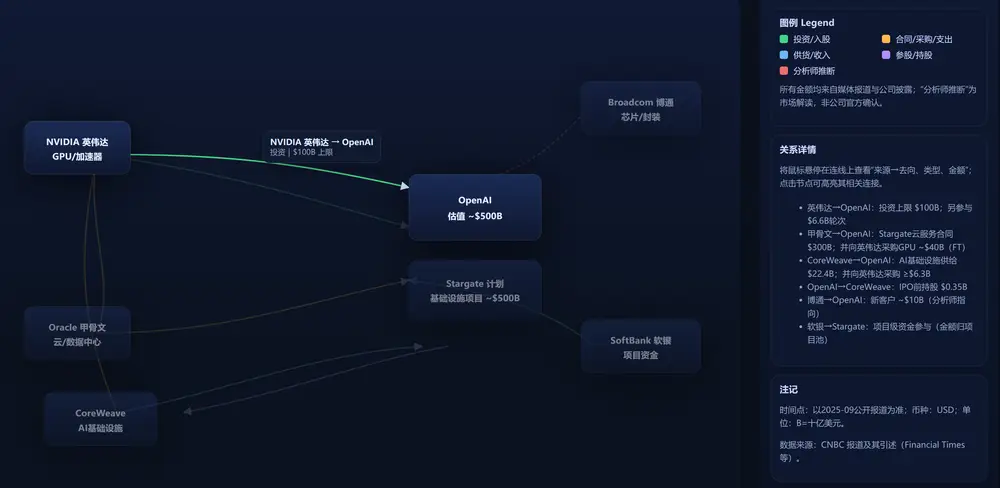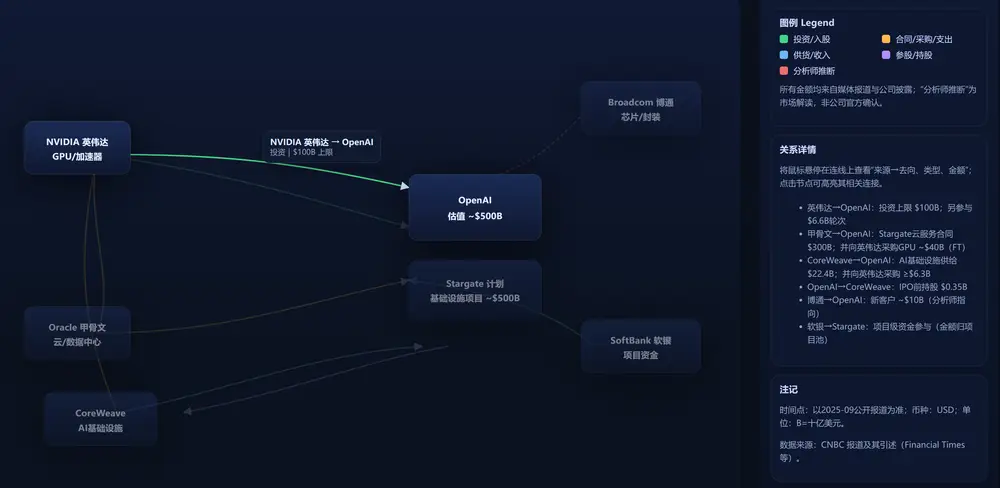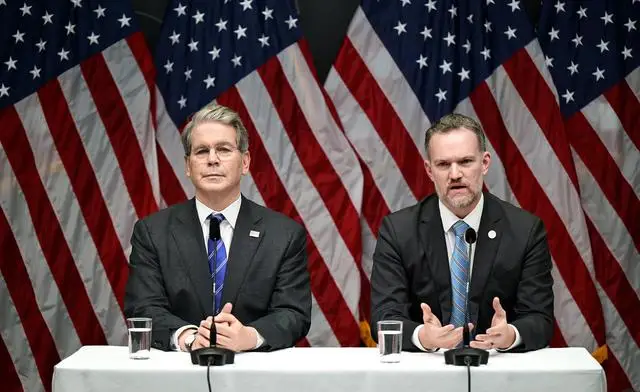Recent news reports indicate that OpenAI has been aggressively expanding its computing power, signing numerous high-value partnerships and sparking market excitement. On September 25th, CoreWeave (an Nvidia-backed cloud services startup) announced an additional commitment of up to $22.4 billion, doubling the $11.9 billion pledged in March. On September 23rd, Nvidia announced plans to make a strategic investment of up to $100 billion in OpenAI in exchange for equity and future revenue sharing.
In July, Oracle signed a $300 billion cloud services agreement with OpenAI, part of its $500 billion "Stargate" initiative, funded by SoftBank and other institutions. Furthermore, chipmaker Broadcom confirmed a new $10 billion client, widely believed to be OpenAI.

▲OpenAI's massive deal size, source: CNBC
Although this AI startup, valued at $500 billion, is still burning cash and incurring losses, its multi-billion-dollar and even multi-hundred-billion-dollar deals with numerous tech giants have helped propel US stock indices to new highs this week.
OpenAI emphasizes that short-term losses and heavy upfront investment pave the way for future model and product iterations. However, several institutions have warned of risks and questioned the sustainability of its ecosystem. According to Bain & Company's annual technology report, global demand for AI computing power could reach 200GW by 2030. With an annualized capital investment of approximately $500 billion, even if OpenAI generates approximately $2 trillion in annual revenue, the market will still lack approximately $800 billion.
Even more notably, these partnerships are not only reflected in contract values but also deeply intertwined through equity and supply chains. Public information shows that OpenAI had already invested $350 million in CoreWeave before its IPO in March. In October 2024, Nvidia also participated in a $6.6 billion funding round for OpenAI. The Financial Times reported in May of this year that Oracle plans to invest approximately $40 billion in Nvidia chips for OpenAI's data centers.

▲AI-generated diagram of fund flows
In September, Nvidia also disclosed receiving a GPU order worth approximately $6.3 billion from CoreWeave, further strengthening the interconnectedness within the industry chain (as shown in the figure, funds circulate within several companies). Analysts point out that this interconnected flow of funds and orders creates a "self-circulating" financial system, which also poses potential risks.
In response to various criticisms, OpenAI CFO Sarah Friar revealed that the company expects revenue of approximately $13 billion in 2025, far lower than the hundreds of billions of dollars in contracts already signed. She stated that "a technological wave requires massive infrastructure investment," and cited the example of overdevelopment in the early days of the internet as a defense. OpenAI CEO Sam Altman stated, "Companies are willing to incur long-term losses for future growth; this is the infrastructure needed to achieve AI."
Conclusion: Is OpenAI experiencing a new-century version of the dot-com bubble?
Investment firm Bespoke published a statement emphasizing that OpenAI's partnership with Nvidia resembles the "vendor financing" model of the dot-com bubble around 2000. If its growth relies on supplier capital injections, the entire ecosystem may be unsustainable. Peter Boockvar, Chief Investment Officer of wealth management firm One Point BFG, stated that these transaction amounts "far exceed those at the end of the last century," and that AI companies must generate massive profits to realize a return on investment.
From Nvidia's $100 billion investment, to CoreWeave's doubling of its investment, to Oracle's Stargate contract, OpenAI has signed far more partnerships in just three months, both in terms of value and volume, than ever before. Compared to the past, the intertwining of funding, equity, and orders is more complex, with giants interconnected. Demand for AI is indeed growing rapidly, but whether it can sustain such a massive capital commitment remains highly uncertain.

%20--%3e%3c!DOCTYPE%20svg%20PUBLIC%20'-//W3C//DTD%20SVG%201.1//EN'%20'http://www.w3.org/Graphics/SVG/1.1/DTD/svg11.dtd'%3e%3csvg%20version='1.1'%20id='图层_1'%20xmlns='http://www.w3.org/2000/svg'%20xmlns:xlink='http://www.w3.org/1999/xlink'%20x='0px'%20y='0px'%20width='256px'%20height='256px'%20viewBox='0%200%20256%20256'%20enable-background='new%200%200%20256%20256'%20xml:space='preserve'%3e%3cpath%20fill='%23FFFFFF'%20d='M194.597,24.009h35.292l-77.094,88.082l90.697,119.881h-71.021l-55.607-72.668L53.229,232.01H17.92%20l82.469-94.227L13.349,24.009h72.813l50.286,66.45l58.148-66.469V24.009z%20M182.217,210.889h19.566L75.538,44.014H54.583%20L182.217,210.889z'/%3e%3c/svg%3e)




